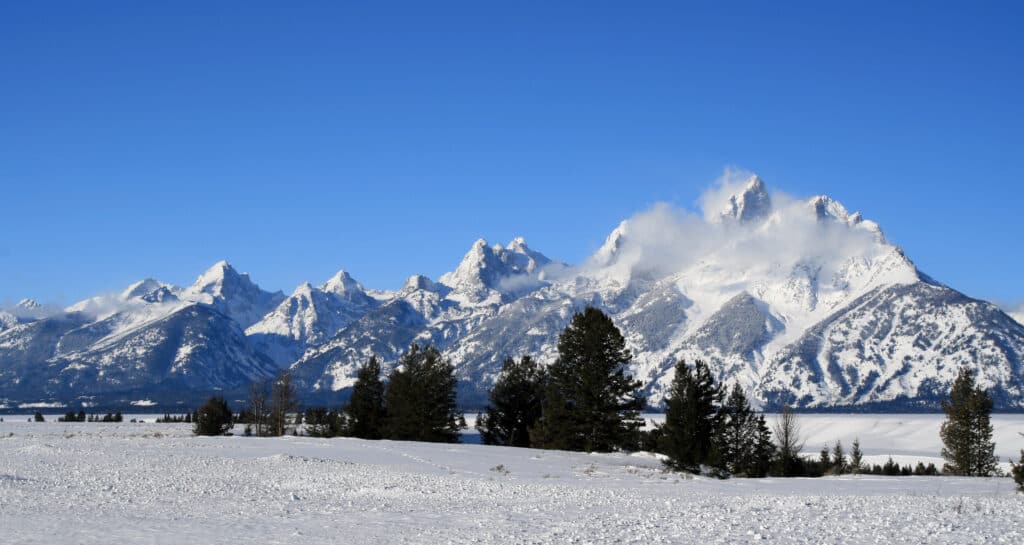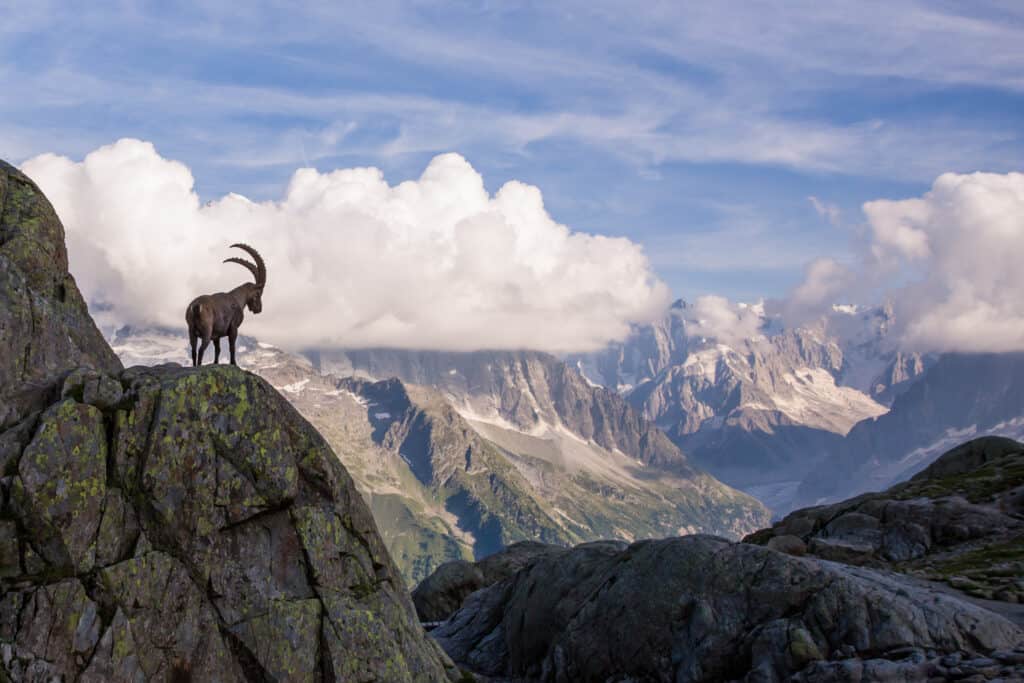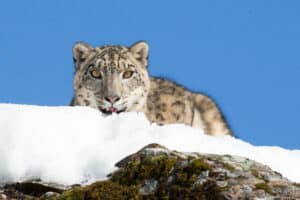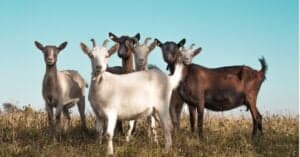The Alps mountain range lies entirely in Europe and is the most extensive, and highest range in its region. Stretching across 7 European countries including Switzerland, Germany, Italy, Slovenia, and more, the Alps are home to over 30,000 different types of animals. Winter in these mountain ranges brings with it lots of snow, and this video shows how baby goats manage to escape as a devasting avalanche approaches.
Watch the Heart-Stopping Video Below
How Chamois Survive in the Alps

The chamois has specialized hooves that help them navigate slippery and rugged terrain in mountainous regions.
©Wolfgang Kruck/Shutterstock.com
In the winter the Alps are treated with thousands of feet of snowfall. Chamois and other animals are adapted to survive the dangerous winter climate and mountain terrains in the Alps. A thick coat covers this goat, keeping them cold. They also have hooves with grips that help them navigate the slippery terrain.
Living in groups of up to 15 to 30 members also helps chamois survive in the snowy mountains. Like in the video these baby goats are able to narrowly escape the avalanche by using each other footsteps to avoid weak spots in the snow. In the summer the chamois spend their in the meadows, but when winter comes they move to higher altitudes. Avalanches can be extremely deadly, and the wrong move could have been the last for these goats.
Why are Avalanches Dangerous?

The types of avalanches include loose snow, slab avalanches, powder snow, and wet snow avalanche.
©iStock.com/htrnr
A single snowflake is harmless, but when large amounts of snow compound together it can be a recipe for disaster. Avalanches occur when wind, rain, warm temperatures, or other factors cause snow to loosen up from mountains, and hills. All it takes is a small amount of snow to be the catalyst for a large avalanche, able to grow in size and speed very quickly.
When in progress snow speeds are able to reach up to 200 mph (320 kph), but the average dry avalanche reaches speeds around 80 mph (128 kph). If an avalanche picks up enough speed the snow mixes with the air and looks very powdery, like in the video.
What makes avalanches so dangerous is the amount of snow that falls. A large avalanche is able to contain around 300,000 cub yards of snow, which is the same as 20 football fields covered with 10 feet of snow. The types of avalanches include loose snow, slab avalanches, powder snow, and wet snow avalanche. Higher speeds and snow are the main factors for a dangerous avalanche, some happening in seconds.
Animals in the Alps?

Another ungulate equipped to inhabit the snowy Alps is the Ibex.
©Angelina Cecchetto/Shutterstock.com
Chamois is just one of the animals that live in the snowy Alps. Due to the region’s extremely dangerous conditions and environment, only animals adapted to the area can survive. Avalanches are just one of the many dangers of living in the Alps.
Some of the animals that live in these mountains include:
- Golden Eagles
- Marmots
- Eurasian eagle-owls
- Ibex
- Red Deer
- Lynx
The summit of the Alps is in France, and at its peak is 15,77 feet above sea level. On average there are around 100 avalanches a year in these European mountains, and even the smallest of animals like the baby goats in this video learn how to survive the mountain’s snowy death traps.
Is It Normal for Chamois to Get Caught in Avalanches?
As shared in the video, avalanches are one of the greatest dangers during wintertime in the Alps. Chamois are used to dealing with this threat. If a herd must cross a dangerous mountainside, the most experienced Chamois scopes out the area for possible dangers, its goal being to find the safest area to pass through. Simultaneously, it creates a path that other members of the herd can follow. They only venture forward once they see that the leader has safely crossed the area.
In the video, the Chamois instinctively take the path one at a time to lessen the risk of putting weight on the snow that could give way. Statistically, one study which lasted 13 years traced the mortality rates of 6500 chamois. Of that number, 1,757 died of “natural accidents,” a category that would include avalanches.
How Large Do Chamois Get?
Chamois are small bovids, with full-grown adults reaching 70–80 cm (28–31 in) in height and 107–137 cm (42–54 in) in length. Males are somewhat larger than females. Both genders have a weight range of 30–60 kg (66–132 lb) and 25–45 kg (55–99 lb), respectively.
The photo featured at the top of this post is © Kelp Grizzly Photography/Shutterstock.com
Sources
- Chamois , Available here: https://www.britannica.com/animal/chamois-genus-of-mammals
- Avalanches , Available here: https://www.eoas.ubc.ca/courses/atsc113/snow/met_concepts/07-met_concepts/07j-types-of-avalanche/#:~:text=There%20are%20two%20main%20types,snowpack%20becomes%20overloaded%20and%20fails.
- (1970)
Thank you for reading! Have some feedback for us? Contact the AZ Animals editorial team.






